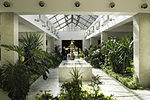Church of the Holy Apostles Peter and Paul, Topčider
1830s establishments in Serbia19th-century Serbian Orthodox church buildingsBaroque Revival architectureChurches completed in 1834Cultural Monuments of Exceptional Importance (Serbia) ... and 5 more
Obrenović dynastyPrincipality of SerbiaSavski VenacSerbian Orthodox church buildings in SerbiaSerbian Orthodox churches in Belgrade

Church of the Holy Apostles Peter and Paul, known as the Topčider Church (Serbian Cyrillic: Топчидерска црква) is the Serbian Orthodox Church, located in Topčider park, in the municipality of Savski Venac in Belgrade, the capital of Serbia. Built between 1832 and 1834, it was an endowment of Prince Miloš Obrenović, who was also its founder. It is located next to the Residence of Prince Miloš. The church was declared a cultural monument and protected by the state in 1949.
Excerpt from the Wikipedia article Church of the Holy Apostles Peter and Paul, Topčider (License: CC BY-SA 3.0, Authors, Images).Church of the Holy Apostles Peter and Paul, Topčider
Булевар војводе Путника, Belgrade Београд (Савски венац) (Savski Venac Urban Municipality)
Geographical coordinates (GPS) Address External links Nearby Places Show on map
Geographical coordinates (GPS)
| Latitude | Longitude |
|---|---|
| N 44.7812 ° | E 20.4439 ° |
Address
Топчидерска црква Светих апостола Петра и Павла
Булевар војводе Путника 11
11000 Belgrade, Београд (Савски венац) (Savski Venac Urban Municipality)
Central Serbia, Serbia
Open on Google Maps








